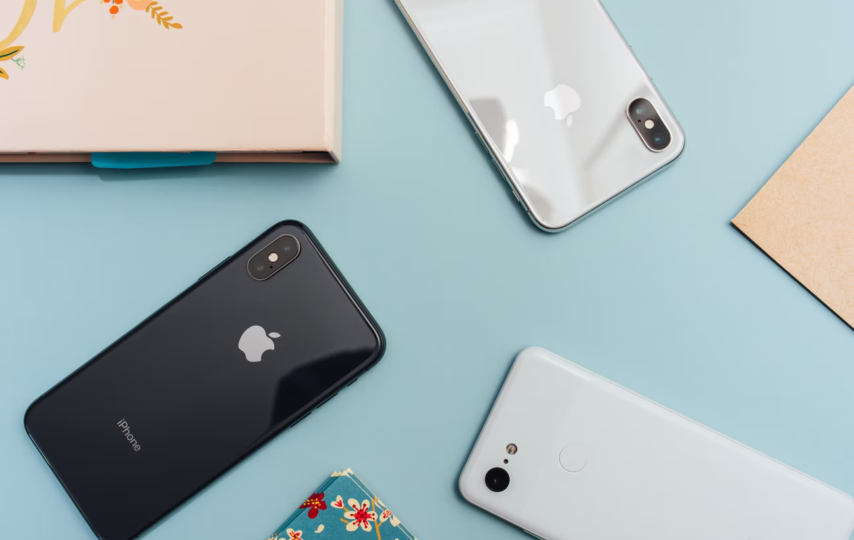Introduction
The unparalleled popularity of iPhones and other Apple gadgets has given rise to a booming market for iPhone replacement parts. In China, entire factories are established where they specialize in making unofficial iPhone parts for third-party repair centers that were not able to obtain authorized replacement parts.
As fascinating as the Apple device repair ecosystem can be, it can be confusing to differentiate between authentic Apple stores, Apple authorized stores, third-party repair centers, as well as independent repair centers. If you’re seeking to understand more about iPhone screen repair services, read on more to find out.
The Aftermarket for iPhone Replacement Parts
In China, a small factory of about 10 workers alone is able to manufacture up to 10,000 phone screen parts each month, which is a huge return for the minimum amount of investment made. For larger factories, operations can reach up to millions of iPhone replacement parts per month. These include more well-known companies such as Shenchao and Longteng LCD, which produce light crystal displays (LCDs) used by many third-party repair centers. Evidently, this highlights the extensive demand for iPhone replacement parts around the world and how lucrative this industry can be.
Third-party repair centers that are not authorized by Apple are unable to get replacement parts from Apple as the OEM parts that are distributed to Apple and its authorized stores are limited. Thus, there is a need for such repair centers to source elsewhere. With more than 15,000 independent repair centers in the United States alone, one can only imagine how many thousands more independent repair centers there are across the globe.
However, some might be skeptical of the quality of replacement parts produced by third-party suppliers. While this might be true to some extent, there are always some exceptions. Technicians who work in these repair centers note that the quality of these replacement parts varies greatly, from being almost indistinguishable unless compared side by side, to not even coming close. These lapses in quality can be seen from the differences in resolution, color, responsiveness as well as durability. While authentic Apple products are generally superior, some customers opt for replacement due to cost and time factors. Unfortunately, the market for iPhone replacement parts is largely a free market with no regulation or standards to uphold. This is just one of the things that customers need to take into consideration when deciding on what kind of repairs to go for.
Refurbished Replacement Parts
Apart from third-party iPhone replacement parts, there is a growing market for refurbished replacement parts. Some repair centers will collect and repair LCDs from faulty iPhones and afterward sell them to a refurbishing company in bulk so that they can be reused again. These refurbishing companies then resell the LCDs back to repair centers for future use. However, the supply is limited. As a result, many repair centers have shifted to new iPhone replacement parts instead.
Apple Authorized Stores
Apple authorized stores are the only way for repair centers to obtain genuine Apple phone parts. It is compulsory for these stores to meet Apple’s requirements, including training and tests, which might be extremely costly for some stores. The standards are also maintained through audits and reviews by Apple.
Getting the seal of approval from Apple can give a sense of security to customers as they know that the quality of products they would get is what Apple themselves would offer. Additionally, Apple also lists its authorized stores on its Customer Support website. With genuine phone parts, peace of mind that the service you get is regulated by Apple, as well as reimbursement for business-related expenses, this might make it more attractive for both stores who are thinking of getting authorized, and the customers themselves. There is also less hassle as there would be a decrease in low-quality improper repairs.
However, due to its stringent regulations, it might be costly and cumbersome for stores to follow, and the repairs that can be done in-house are limited by Apple. Many repairs, especially those related to phone display, must be sent to Apple directly, which can take quite a long to complete. Often, Apple is the one that provides phone replacement services, and this further limits the in-house fixing abilities of authorized stores. Though in recent years, Apple has started to provide some of its authorized stores with Horizon Machines to enable more in-house repairs to be done.
Independent Repair Centers
This gives rise to many independent repair centers that choose not to be authorized by Apple. Many of them stem from cost reasons. The high cost and lack of freedom make it impractical especially for small businesses to constantly get authorized by Apple. Apple repairs are also limited to just battery and screen issues, while other problems warrant just a phone replacement. Furthermore, Apple does not compensate enough to cover administrative costs, which is also another big reason that businesses choose not to get authorized.
Without proper verification, these independent repair centers are not able to obtain genuine apple parts and can only opt for third-party suppliers as previously mentioned, or refurbished replacement parts.
How Apple Sees It
Unsurprisingly, Apple encourages its customers to seek repair services from an Apple store or one of its authorized stores. This suggests that independent third-party repair centers might be unsafe as Apple is unable to guarantee the quality and safety of their repairs.
Devices that undergo repairs by Apple would be placed through a mini-factory testing procedure with the Horizon Machine. Features of the phone would be carefully calibrated to meet its specification and only Apple or its authorized stores would be able to guarantee such a high level of quality check. Apple warns that repairs done by independent repair centers can result in display dead spots, spoilt touch ID buttons, and lowered battery life. They also caution against counterfeit replacement parts used during repairs.
The Differences
Independent repair centers do offer repair services at a discounted price, compared to what Apple charges, especially with older iPhone models. This is also true in cases where Apple replaces the device entirely and customers would have to pay a replacement cost that is not included in the warranty. On the other hand, independent repair centers can sometimes fix these problems without replacing the phone entirely. Of course, with higher quality replacement parts and OEM components being sold, prices of independent repair centers do not differ that significantly from Apple, especially for newer models. Independent repair centers often charge a price that is synonymous with the type and quality of repair provided.
Without regulations in place, independent repair centers run the risk of not taking accountability. Thus it is important to find someone whom you trust and is transparent with where they source their replacement parts from. Also, note that there are some issues like Touch ID problems that cannot be fixed at such repair centers.
Conclusion
With its large demand, the market for iPhone replacement parts seems to be on an increasing trend. Coupled with the Right to Repair legislation, this can be difficult for customers to navigate through the myriad of choices when it comes to finding the right fix for your broken phone. Depending on the results of this legislation, we can expect to see either a continued boom in independent repair centers or an eventual phasing out of such repair centers entirely.













